Thamel is not a portal to a more “authentic” Nepal. It’s the real deal.
Thamel, Kathmandu’s designated tourist quarter, is a funny old thing. It started off as a medieval site of Buddhist learning, but by the turn of the millennium, it had mutated into a red-light sandpit for an unholy trinity of thugs, dirty cops, and ex-rebels. Since then, it’s cleaned up its image, cleared away the rubble (of the 2015 earthquake), and braced itself to welcome not just the usual backpacker crowd, but well-heeled visitors to new deluxe hotels as well as a wave of Chinese tourists.
Visitors to this square kilometer in north-central Kathmandu may consider it a one-stop shop to streamline the rest of their Nepal trip, from trekking to thangkas to two-for-one cocktails. Too often, they make a beeline for the world heritage sites scattered across the Kathmandu Valley before heading to the mountains. But skating over the surface of this neighborhood does it a great disservice: this is a chance to trace the history of Nepal’s capital—once the greatest urban hub in the Himalayas.
Thamel lives by day and night like nowhere else in Nepal. If you’re chilling out after a trek, happy hours will draw you into the wee hours, from pub to club through grub that’s as cosmopolitan and globalized as anywhere in South Asia. The challenge is to uncover the local.
Ideally, you’d begin the walking tour in Bajeko Sekuwa, a popular eatery on the left fork north of the busy Sohrakhutte junction. In a city until lately unaccustomed to eating out at all, the franchise embodies the culmination of a new social culture. You could sit out in the spacious patio and have a coffee with a hearty masala omelet, plump for a taas set (a Nepali bento of puffed rice, curried vegetables, chutneys and grilled meats) or order a la carte offal. The Newars—the original inhabitants of the Kathmandu Valley—are famed for their festivals and food, and the water buffalo is the source for 250-odd dishes. However, at the time of writing, all outlets of Bajeko Sekuwa have been closed indefinitely due to the owner’s alleged involvement in a notorious gold smuggling case.
[Read: The history of Kathmandu in 11 dishes]
The irony here is that Sohrakhutte, named after a (now demolished) 16-pillar resthouse, was an important staging post on one of a pair of trans-Himalayan trade routes intersecting in the Kathmandu Valley: the city lay at the crossroads of a millennia-old economy stretching from India to Tibet, disrupted by the Chinese invasion of 1950-51. So, tighten your belt and continue to the top of the hill. Head east along the main drag and turn right before a brightly gilded temple, entering Thamel. It’s instantly recognizable by shops selling wares you may find yourself inexplicably drawn to: hippyish garb, faux-antiques, and mountain tours. Follow this street to the left until it opens out into the public water spouts of Ga Hiti.
At one time the three city-states of Kathmandu, Patan, and Bhaktapur relied on an intricate subterranean network that piped water from the hills ringing the Valley. You can descend the steps to admire the ancient carved stone makara (mythical sea dragons). Take care not to disturb the ladies busy with laundry; they’re back in business following a community effort to restore the Hiti and their confidence, devastated when the earthquake toppled a surrounding hotel into the square.
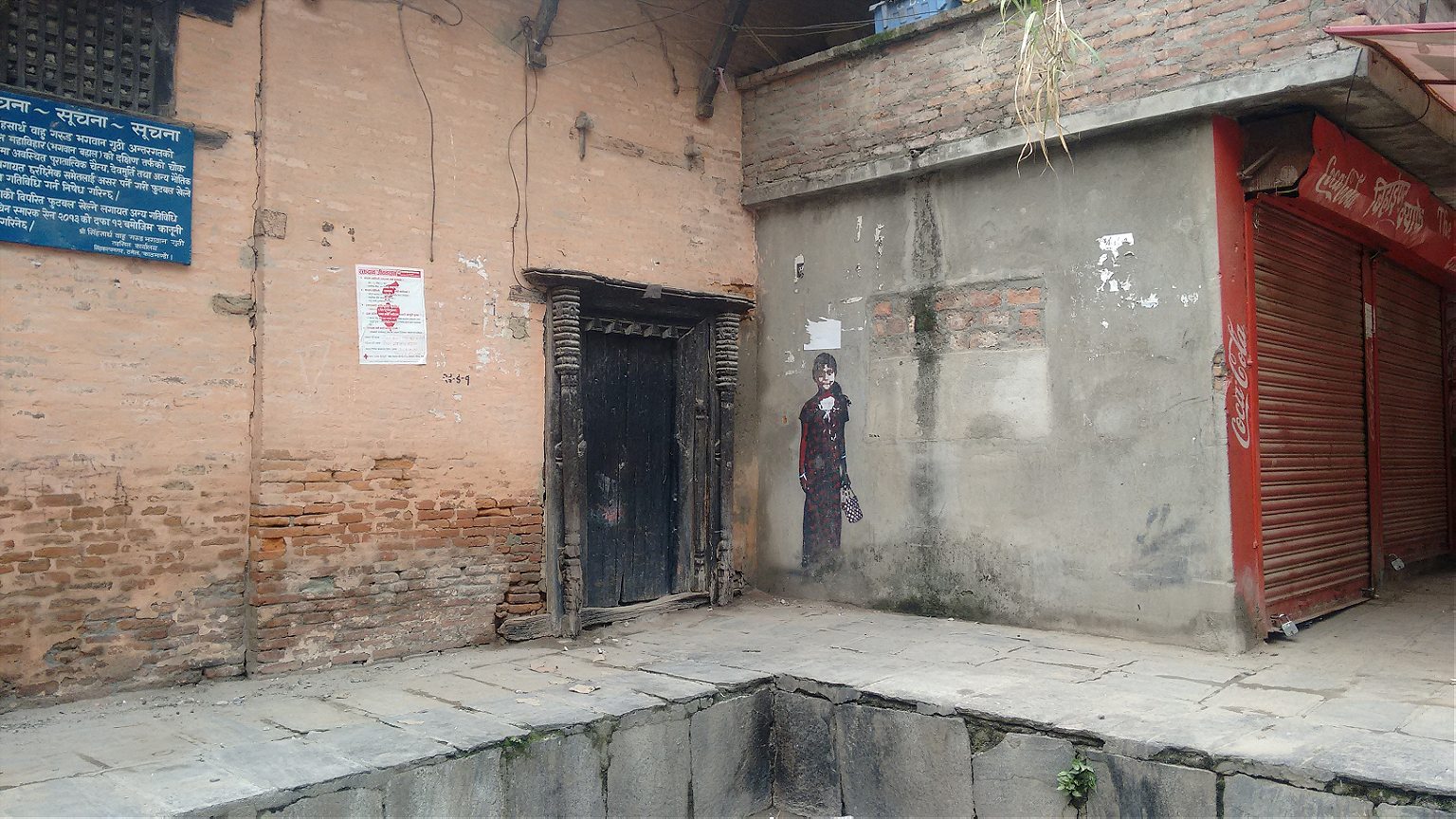
Step out and turn right to rejoin the old trade route. In 150 meters (just under 500 feet) you’ll find yourself craning your neck to take in the monolithic Chhaya Devi Center, modeled as the future of Thamel tourism. It squats blithely on the past: the site of a lotus pond claimed by the unobtrusive Bhagwan Bahal (aka the Bikramashila Mahabihar) directly opposite. This is, in fact, the origin point of Thamel. Step right in.
A Buddhist monastery was founded here in 1042, and the space offers a tranquility lost to modern Kathmandu. Take a moment to recall Singasarthabahu, the legendary King of the Traders to whom the central pagoda is dedicated, and who’s celebrated for defeating flying Tibetan demonesses who’d gobbled up 500 of his men. Feeling peckish? Time for a shortcut. Skip past the Behind Cafe leaning against the monastery, and you’ll be funneled into a residential quarter.
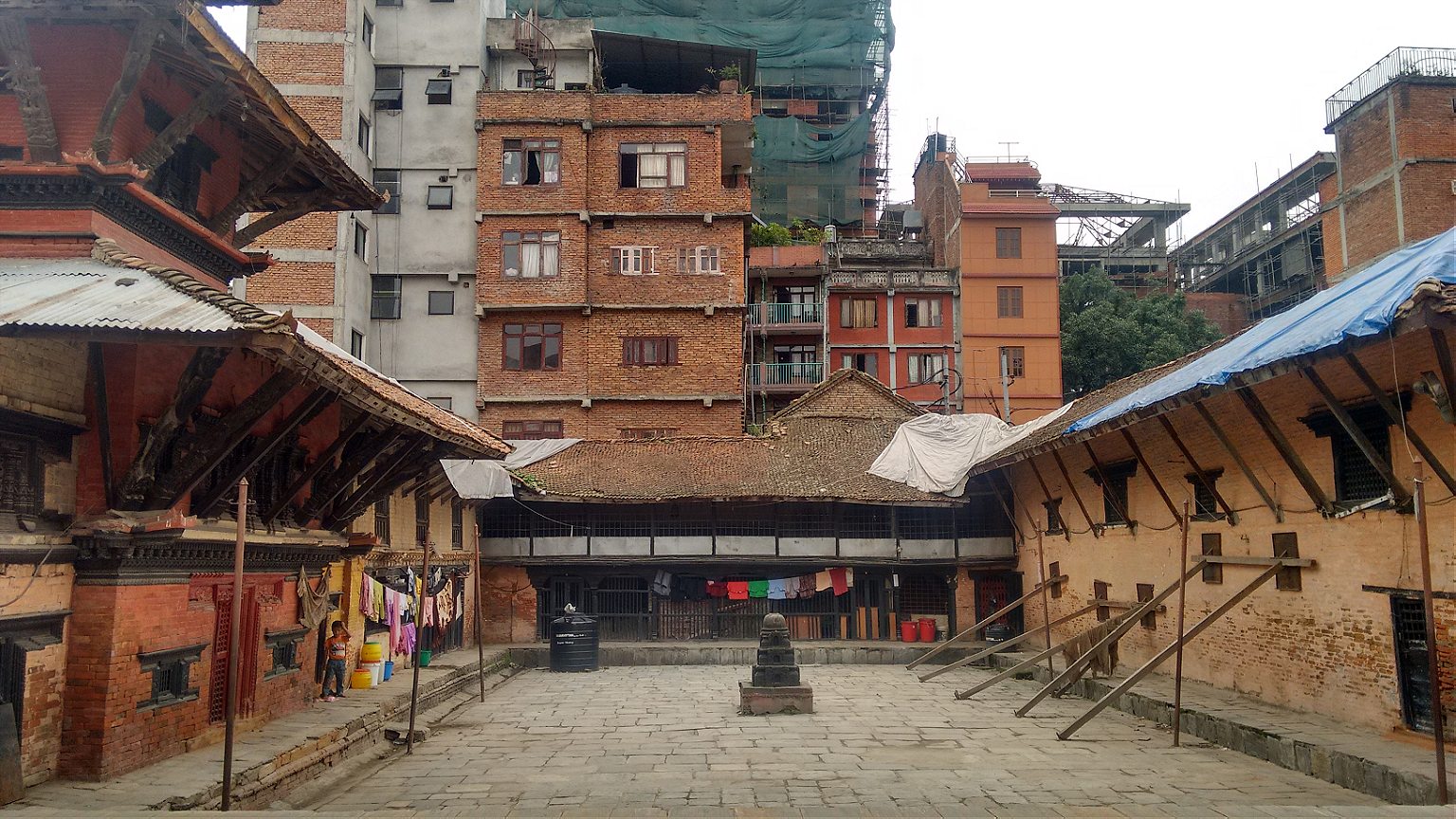
This is Thabahi—of which Thamel is a corruption in every sense of the word—once encircled by rice fields and walled off from the core of medieval Kathmandu. It became part of the city proper only when the Shah Kings from the western hills swept into the Kathmandu Valley, defeating the Newar kings in 1769.
Walk 50 meters north along this street then head west along a narrow alley to turn left at a ragged tree over a shrine. Options for food abound: to your right is Momotarou, offering not just a range of cheap bibimbap but also a rare chance to sample the cuisine of the Tharus, an ethnic group from Nepal’s southern, subtropical belt. If spicy gram-flour cutlets and steamed dough dipped into potato curry sound too hot, walk on to the beautifully-appointed Thamel House, where you can order upmarket chicken-and-goat versions of Newari cuisine as well as posh Nepali dal-bhat. Or try the well-stocked Gilinche Tibetan Restaurant to the left, perfect for warm millet beer and northern noodle soups should the weather demand it. You could even go full momo to the unassuming Momo Hut, just inside the entrance to Narsingh Chowk (under the famous Mohan’s Tattoo Inn), where Nepal’s fabulous dumplings are to be found not just steamed, fried, and souped-up, but stuffed with much more than the usual meats: cheese, paneer, and—wait for it—chocolate.
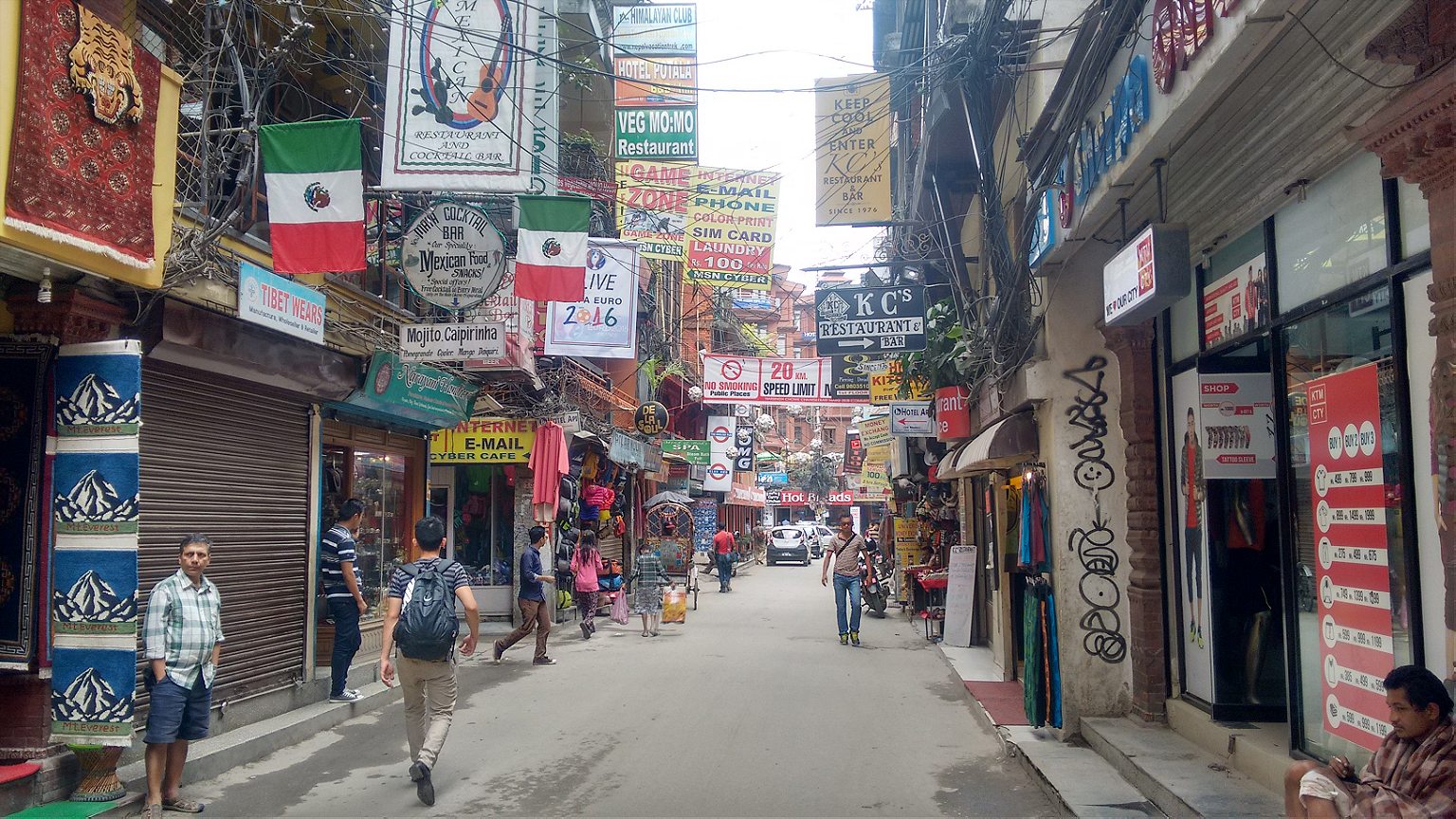
Narsingh Chowk was once a haven for aristocratic Ranas from a dynasty of hereditary prime ministers. Little remains here of the neoclassical mansions they expended the national exchequer on (do check out the magnificent restoration of the Garden of Dreams at the head of Thamel). But follow the alley to the right past a dzong-style hotel and you’ll run into a three-wheeler tempo embedded in an arboreal facade—what’s left of an imposing residence restyled as Roots Bar. Keep going past old favorite Pumpernickel Bakery and turn left.
Over 4000 businesses populate this maze today, selling all things bad and beautiful, and no sooner does one cave in than another three spring up. But we’re at a T-junction now, and on the stretch where it all began for modern Thamel. Until the 1970s, in fact, Thamel was a complete backwater. But with the end of legal marijuana and open visas, hippies were actively discouraged from setting up camp in ‘Freak Street’ (on the other side of Durbar Square) in favor of adventure-seekers. The Kathmandu Guest House, a few steps to your right, was at the vanguard of the new tourism, and once boasted US$5 rooms and bookings from The Beatles.
Head left past old-timers such as Yin Yang (a staid avatar of the Freak Street favorite), and turn into the driveway leading to Jatra Cafe and Bar. The stylish boutique hotel you face was once the residence of the late, lamented statesman Ganesh Man Singh, who led two revolutions—in 1951 and 1991. The good and the great all beat a path to the Iron Man’s door, including Tenzing Norgay, the hero of Everest. You’re in good company.
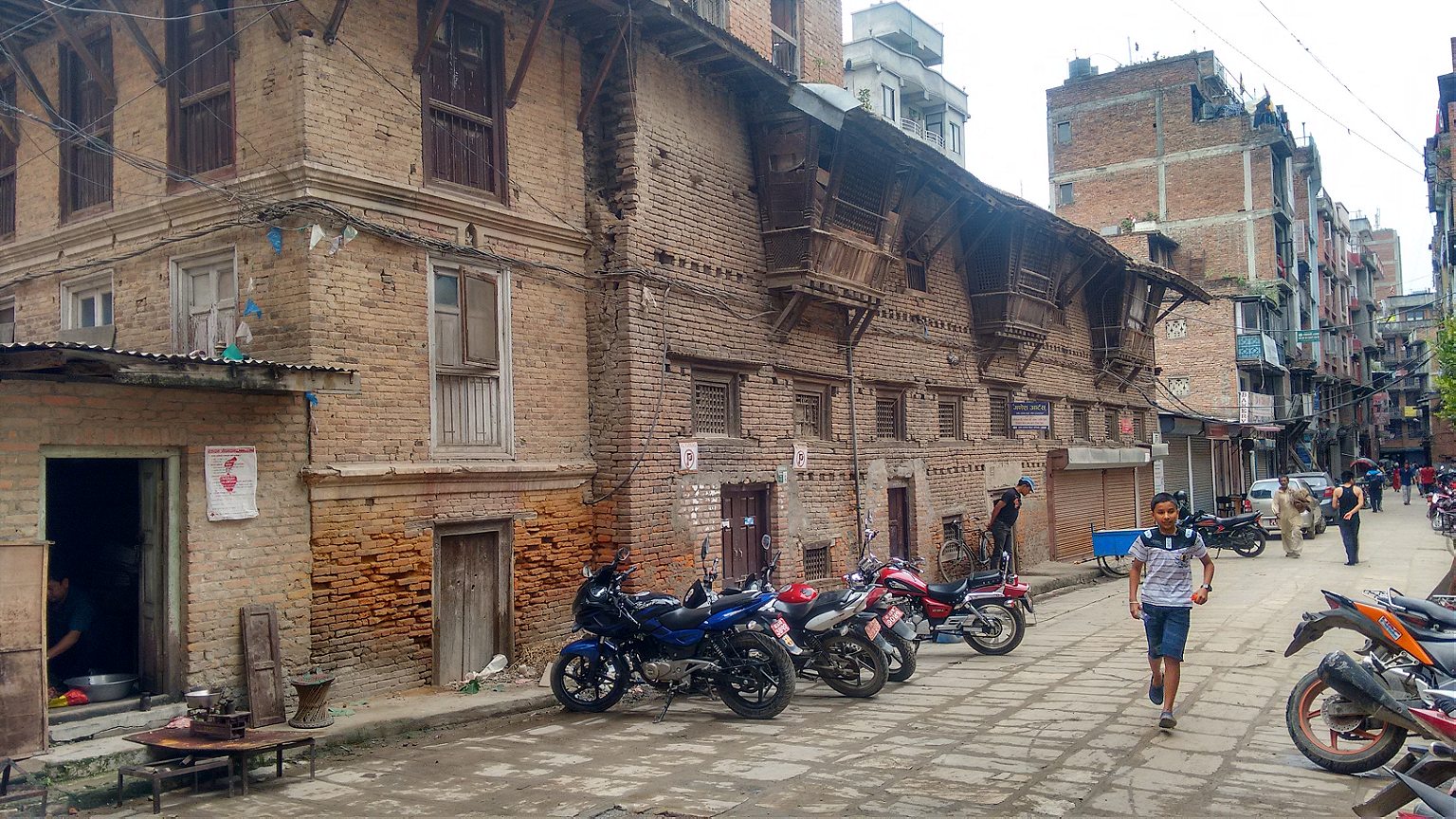
From here, to explore Thamel further, carry on to the end of the road, go left on JP Marg, and left again to rejoin Narsingh Chowk. You can turn right and right again into a burgeoning Chinatown, with great-value restaurants such as Kylin. This is just past the trekking smorgasbord of Shona’s Alpine, pitched perfectly between Thamel’s ubiquitous counterfeits and the pricey originals on Tridevi Marg, leading to the Garden of Dreams. Readers, don’t miss out on Vajra Books, a treasury of all things Himalayan.
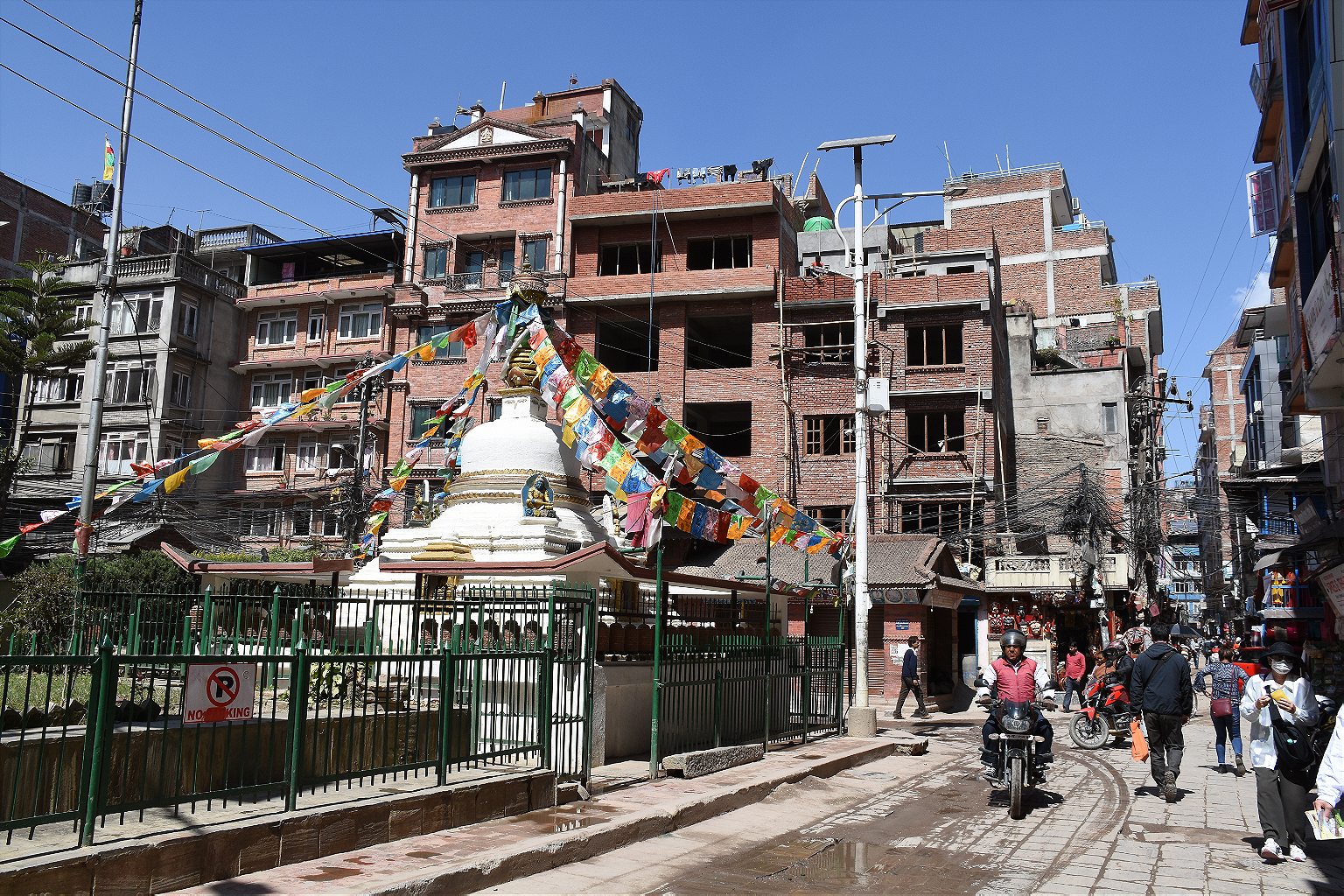
To link up with the UNESCO World Heritage Site of Kathmandu Durbar Square, however, turn left onto JP Marg, then right. You’ll reach a holy roundabout (the Dharmadhaatu Stupa) in 200 meters. Take the left fork, and hit the great market of Asan (yes, you’re still on the trade route!), its six arms radiating into their own commercial specializations. Take the right fork, and drop in to say hello to imposing Shree Gha, the stupa that followed a monk from Benares to Kathmandu. You’ll reach Durbar Square either way (stop at the Akash Bhairav temple for a refreshingly rich lassi), but take care to observe the motley mash of architectural styles as you dodge walkers and bikers. Just remember as the tourist tat fades behind you: Thamel is not a portal to a more ‘authentic’ Nepal. It’s the real deal.
